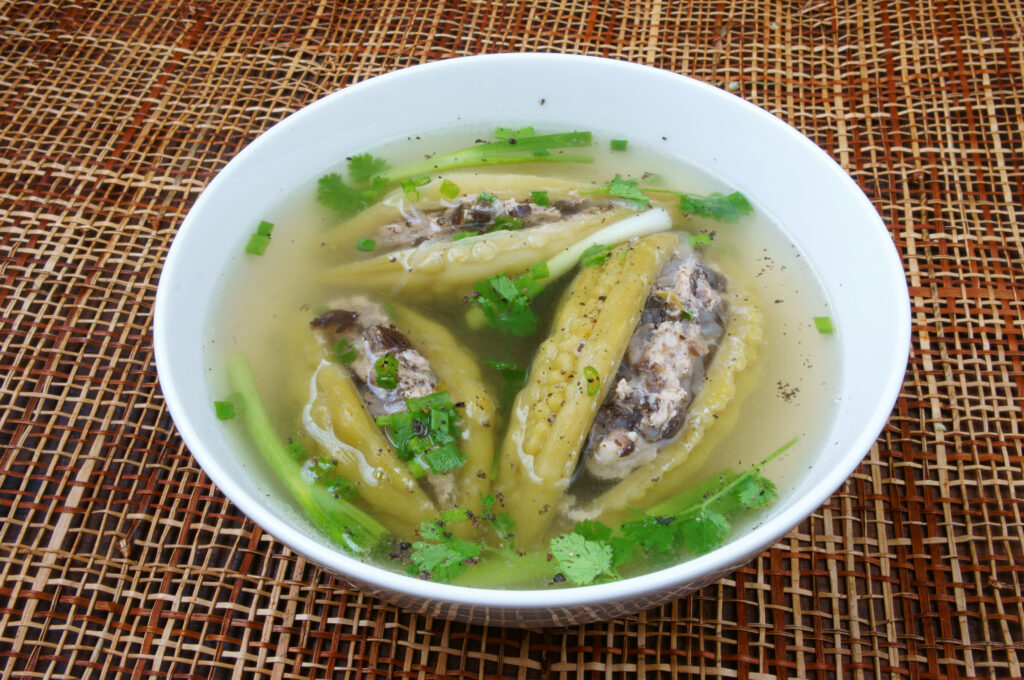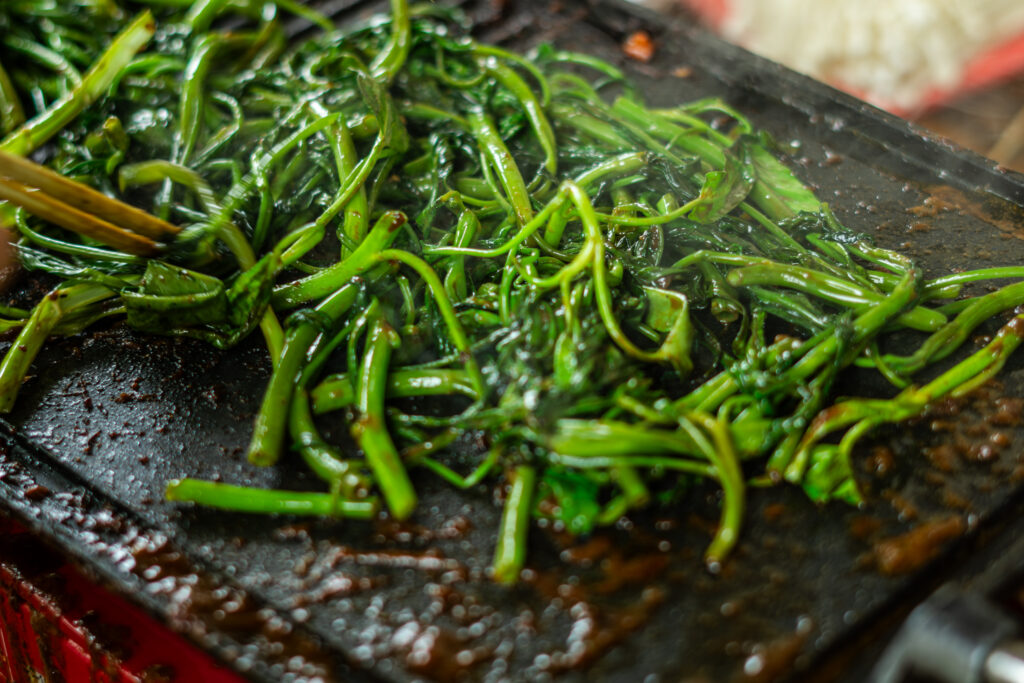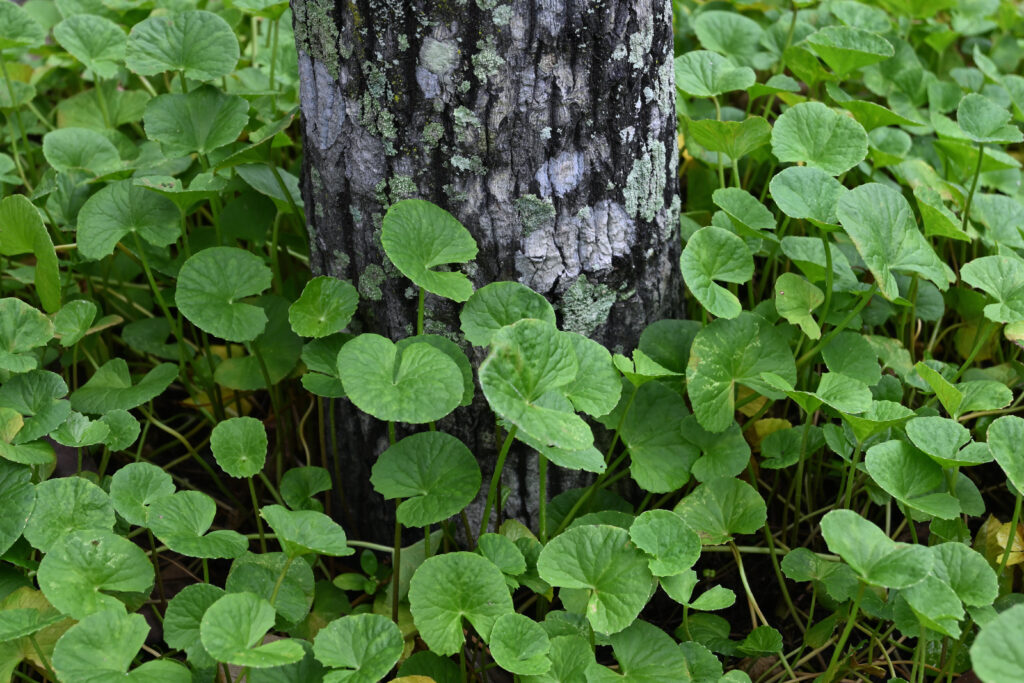Vietnamese cuisine is celebrated worldwide for its balance of flavors, and at the heart of this harmony lies an incredible array of vegetables. From the crisp crunch of beansprouts to the earthy sweetness of lotus root, Vietnamese vegetables are more than just ingredients—they’re a celebration of the country’s fertile soil and rich agricultural traditions.
More than just delicious, Vietnamese vegetables hold cultural significance, embodying a lifestyle rooted in sustainability and respect for nature. Ready to explore the colorful world of Vietnamese vegetables? Let’s take a closer look at Vietnamese vegetables, their unique flavors, and how they bring Vietnamese dishes to life.
The Role of Vietnamese Vegetables in Vietnamese Cuisine

Vietnamese cuisine is built upon the foundation of fresh, seasonal ingredients, with vegetables playing a starring role in every meal. Unlike many culinary traditions where vegetables are secondary, in Vietnam, they often take center stage. From the bustling street markets to family dinner tables, Vietnamese vegetables are celebrated for their vibrant flavors, nutritional value, and versatility.
Balancing Flavors and Textures
In Vietnamese cooking, vegetables are not just accompaniments—they are essential in achieving the perfect balance of flavors and textures. For instance, banana flowers bring a delightful crunch to dishes like gỏi bắp chuối (banana flower salad), perfectly complemented by tender slices of pork or shrimp and a tangy dressing. Similarly, water spinach (rau muống), whether stir-fried with garlic or tossed in a spicy salad, offers a crisp, juicy texture that pairs well with rich, savory dishes. This interplay of textures ensures every dish is a harmonious sensory experience.
Seasonal and Sustainable
Vietnamese cuisine revolves around eating what’s in season, ensuring that vegetables are always at their freshest and most flavorful. Whether it’s the earthy richness of taro during the rainy season or the crisp bitterness of bitter melon in summer, the use of seasonal produce is deeply rooted in Vietnamese culture. This not only enhances the taste of dishes but also promotes sustainability.
A Key to Health and Well-being
Vegetables are prized not only for their flavors but also for their health benefits. In Vietnam, food is seen as medicine, and vegetables play a critical role in maintaining the body’s balance. Bitter melon, for instance, is believed to help regulate blood sugar levels, while mung beans are said to cool the body and improve digestion. This philosophy of food as wellness is deeply ingrained in Vietnamese culinary traditions.
The Art of Pairing

Vegetables in Vietnamese dishes are often chosen to complement the other ingredients, balancing their natural properties. For example:
- Bitter melon (khổ qua) is paired with pork to create a harmonious yin-yang balance.
- Bamboo shoots (măng) add a refreshing crunch to hearty stews.
- Water spinach (rau muống) stir-fried with garlic acts as a perfect accompaniment to grilled meats, offering a light and fresh counterbalance to heavier flavors.
Beyond the Plate
Vegetables in Vietnam are not just ingredients—they are woven into the culture itself. They appear in proverbs, folklore, and even art, symbolizing abundance, resilience, and simplicity. For instance, the lotus root is celebrated for its ability to bloom beautifully despite being rooted in mud, reflecting the Vietnamese spirit of perseverance.
TOP 20 most common Vietnamese vegetables
Beansprouts (Giá Đỗ) – 20 most common Vietnamese vegetables

Beansprouts are a beloved staple in Vietnamese cuisine, celebrated for their versatility and nutritional value. These crunchy sprouts are frequently found in dishes like Vietnamese vegetable rolls (gỏi cuốn), noodle soups (phở, bún bò Huế), and traditional Vietnamese salads (nộm). A standout pairing for beansprouts is in canh chua, the iconic tamarind sour soup, where they join forces with other Vietnamese vegetables like okra and tomatoes to create a flavorful, refreshing dish.
Beyond their culinary appeal, beansprouts pack a powerful nutritional punch. They are rich in vitamins, protein, and antioxidants, all while being low in calories. Regular consumption of beansprouts has been associated with numerous health benefits, including promoting longevity, boosting immune function, and alleviating stress-related anxiety. They are also thought to enhance eyesight and improve conditions related to genital health.
Bamboo Shoot (Măng) – 20 most common Vietnamese vegetables

Bamboo shoots are a cherished staple in Vietnamese cuisine, offering a unique texture and flavor that make them a standout ingredient in many dishes. Available in sour, sweet, and bitter varieties, bamboo shoots bring versatility to a wide range of Vietnamese vegetable recipes. They are often stir-fried with pork or vermicelli, enhancing the savory flavors of these dishes. Bamboo shoots also shine in traditional Vietnamese soups like duck noodle soup (bún măng vịt) and bone stew (canh măng hầm xương), where their distinct taste adds depth and richness to the broth.
In addition to their culinary significance, bamboo shoots are closely tied to the highland regions of Vietnam, such as Ha Giang and Lao Cai. These regions are well-known for their fresh, locally harvested bamboo shoots, which are commonly sold along roadsides or in bustling markets. For locals and visitors alike, bamboo shoots are more than just a vegetable—they’re a regional specialty and a key part of highland identity.
Whether you enjoy them as part of a savory stew or a stir-fry, bamboo shoots offer a delicious glimpse into Vietnam’s diverse culinary traditions, bringing the flavors of the mountains to your plate.
Water Spinach (Rau Muống) – 20 most common Vietnamese vegetables

When discussing Vietnamese vegetables, water spinach undoubtedly takes a leading role. Known for its versatility and widespread availability, this leafy green is a staple in Vietnamese households, thriving year-round in both terrestrial and aquatic environments. Its long stems and funnel-shaped leaves make it easily recognizable and beloved in many classic dishes.
The simplest and most traditional preparation of water spinach involves boiling it and serving it alongside soy sauce or fish sauce for dipping. The boiled water, infused with the vegetable’s subtle flavor, is often combined with lemon juice to create a light and refreshing soup.
Water spinach’s culinary adaptability doesn’t stop there. It shines in stir-fried dishes with garlic (rau muống xào tỏi) or beef, and it adds texture and flavor to salads (gỏi rau muống). Its crispness and mild taste make it an excellent complement to various savory dishes.

Despite its popularity, water spinach comes with some dietary considerations. It’s best avoided by individuals with gout, hypertension, or osteoarthropathy due to its potential to exacerbate these conditions. Nevertheless, for most people, water spinach offers a delightful, nutrient-rich way to experience the heart of Vietnamese cooking.
Mustard Greens (Cải Xanh) – 20 most common Vietnamese vegetables

Mustard greens (cải xanh) are a versatile and widely loved vegetable in Vietnam, enjoyed both raw and cooked. This vibrant green is packed with essential nutrients, including vitamins A, C, and K, as well as minerals like calcium, iron, and potassium, making it a nutritious addition to any meal.

One of the most iconic preparations of mustard greens in Vietnam is pickled mustard greens, known as dưa cải chua. This traditional dish starts with fresh mustard greens, carefully washed and chopped into bite-sized pieces. The greens are then mixed with salt and left to ferment in jars for several days. The result is a tangy, crunchy, and slightly spicy pickle that pairs perfectly with a wide range of dishes.
Pickled mustard greens are a favorite condiment, often served alongside grilled meats, fried rice, or braised dishes, adding a refreshing zing to balance the flavors. Beyond pickling, mustard greens are also commonly featured in soups, stir-fries, showcasing their versatility in Vietnamese cuisine
Bok Choy (Cải Thìa) – 20 most common Vietnamese vegetables

Bok choy, or cải thìa, is a beloved green vegetable in Vietnam, celebrated for its crisp texture, mild flavor, and versatility in cooking. This leafy vegetable is not only a culinary staple but also a nutritional powerhouse, rich in vitamins, making it a go-to choice for health-conscious diners.
In Vietnamese cuisine, bok choy shines in a variety of preparations. One of the most popular methods is stir-frying it with garlic and oyster sauce. The tender leaves and crunchy stems of bok choy soak up the savory, slightly sweet sauce, creating a flavorful and satisfying dish. This preparation is a staple on the menus of Vietnamese restaurants, often served as a side dish to complement main courses like grilled meats or fried fish.

Beyond stir-fries, bok choy is also used in soups, noodle dishes, and hot pots, adding a refreshing crunch and a touch of elegance to every bite. Whether you’re dining at a high-end restaurant or enjoying a home-cooked meal, bok choy is a Vietnamese vegetable you’re likely to encounter and savor in Vietnam.
Banana Flower (Bắp Chuối) – 20 most common Vietnamese vegetables

Banana flower, or bắp chuối, is a versatile and cherished ingredient in Vietnamese cuisine, often found in salads, soups, and stir-fries. With its mildly nutty flavor and tender yet slightly crunchy texture, banana flower adds a unique element to many dishes.
In Vietnam, banana flower is a staple in refreshing salads, where its slightly astringent taste complements other fresh vegetables. A popular recipe combines thinly sliced banana flower with shredded cabbage, carrot, and onion, all tossed in a tangy dressing made from fish sauce, lime juice, sugar, minced garlic, and sliced chili. The result is a vibrant salad that balances sweet, sour, salty, and spicy flavors, creating a dish that’s both light and satisfying.

Beyond salads, banana flower is also featured in canh chua (sour soup) and stir-fries, pairing beautifully with proteins like fish, chicken, or tofu. Whether enjoyed as a simple side dish or the star of the plate, banana flower showcases the ingenuity and health-conscious nature of Vietnamese cooking.
Lettuce (Xà Lách) – 20 most common Vietnamese vegetables

When it comes to Vietnamese vegetables, lettuce (xà lách) is an indispensable staple, especially in the art of wraps and rolls. Its crisp and refreshing texture makes it a perfect base for many traditional dishes, enhancing both flavor and presentation.
One of the most beloved pairings is with bánh xèo, a savory and crispy Vietnamese pancake filled with pork, shrimp, and bean sprouts. The pancake is broken into smaller pieces, then wrapped in fresh lettuce leaves along with fragrant Vietnamese herbs like mint and Vietnamese coriander. The roll is then dipped into a tangy fish sauce-based dipping sauce, creating an irresistible harmony of textures and flavors.

Lettuce also shines as a foundation for grilled meats, such as beef or chicken, often accompanied by fresh herbs and dipping sauces. The light crunch of lettuce complements the smoky, tender meat and the vibrant, aromatic herbs, offering a balanced and refreshing bite.
This unassuming vegetable plays a vital role in Vietnamese cuisine, proving that even the simplest ingredients can elevate a dish to perfection. Whether as a wrap, a garnish, or a crunchy side, lettuce is an essential part of any Vietnamese meal.
Don’t Miss Out! Your Free 1-Page Guide to Top 20 things to do HCMC at Night
A quick, mobile-friendly guide with local-approved spots and direct links—just tap and go! No fluff, just easy night-time fun. Subscribe to download.
Pennywort (Rau Má) – 20 most common Vietnamese vegetables

Pennywort, or rau má, is a versatile and highly valued Vietnamese vegetable, known for its dual role in both cuisine and traditional medicine. Its slightly bitter yet refreshing flavor makes it a beloved ingredient across Vietnam, where it features prominently in salads, soups, and stir-fries.
One of the most popular uses of pennywort in Vietnam is pennywort juice, a vibrant green drink that is both refreshing and nutritious. This iconic beverage is enjoyed for its potential health benefits, which include improving blood circulation, detoxifying the body, and reducing inflammation. Served with a touch of sugar or mixed with coconut water, it’s a favorite choice for cooling down during Vietnam’s hot and humid days.

Whether in a crisp salad, a warm bowl of soup, or as a revitalizing juice, pennywort is a staple that reflects the harmony between nutrition and natural healing in Vietnamese cuisine and culture
Malabar Spinach (Rau Mồng Tơi) – 20 most common Vietnamese vegetables

Malabar spinach, or rau mồng tơi, is a beloved staple in Vietnamese vegetable dishes, known for its vibrant green stems and heart-shaped leaves. This versatile vegetable is celebrated for its silky texture and mild, slightly sweet flavor, making it a favorite ingredient in Vietnamese kitchens.
In Vietnamese cuisine, Malabar spinach is often featured in comforting dishes like canh mồng tơi, a light and nutritious soup typically prepared with shrimp or minced pork. The soup’s gentle flavors make it a go-to option for family meals, especially during hot summer months. Another popular preparation is poached mồng tơi, served alongside fermented shrimp paste (mắm tôm) or soy sauce for a simple yet satisfying dish.
Jute Vegetable (Rau Đay) – 20 most common Vietnamese vegetables

Jute vegetable, or rau đay, holds a special place in Vietnamese cuisine, particularly for its distinctive texture and versatility in soups. Known for its slimy consistency when cooked, this vegetable adds a unique touch to traditional dishes, making it a beloved ingredient among locals.
One of the most popular ways to enjoy jute vegetable in Vietnam is in canh cua, a traditional crab soup that combines its slippery texture with the rich flavor of crab meat. It’s also a common addition to soups featuring fish or shrimp, enhancing both the texture and taste of the broth. The silky quality of jute vegetable makes every spoonful of these soups a delightful experience, offering a balance between hearty ingredients and refreshing greens.
Whether you’re savoring a steaming bowl of crab soup or trying it for its reputed health benefits, jute vegetable is a must-try when exploring Vietnamese vegetables. Its unique texture and flavor offer a truly authentic taste of Vietnam’s rich culinary traditions.
Red Spinach (Rau Dền) – 20 most common Vietnamese vegetables

Red spinach, or rau dền, are a beloved ingredient in Vietnamese vegetable recipes, recognized for their versatility and unique flavor. This drought-resistant plant is easily identifiable by its small, dark green leaves tinged with a vibrant red hue, and it has become a staple in many traditional dishes across Vietnam.
In Vietnamese cuisine, rau dền is often featured in light, comforting soups. A popular preparation involves pairing the greens with chopped ground pork or shrimp to create a flavorful and nutritious broth. Another classic option is to simply poach the greens and enjoy them dipped in savory braised pork sauce. The tender texture and subtle earthiness of beet greens complement these dishes perfectly, making them a favorite for family meals.
What sets rau dền apart is its adaptability in the kitchen. Whether you’re looking to enhance your soups, experiment with stir-fries, or incorporate them into side dishes, beet greens offer endless possibilities. Their mild yet distinct flavor adds depth to any recipe, making them a must-try for anyone exploring Vietnamese vegetables.
Cabbage (Cải Bắp) – 20 most common Vietnamese vegetables

Cabbage, or cải bắp, is a versatile and essential ingredient in Vietnamese cuisine, with its many varieties offering unique textures and flavors. This humble vegetable is a favorite in Vietnamese kitchens due to its ability to adapt to countless cooking styles, making it a key component in both traditional and modern dishes.
In Vietnam, cabbage dishes are cherished for their simplicity and satisfying flavors. Boiled cabbage served with fish sauce is a comforting classic, while stir-fried cabbage with garlic or minced meat is a quick, flavorful option for everyday meals. Hot pot gatherings often include cabbage leaves for their ability to soak up the rich broth, adding a refreshing crunch. And for something a little more international, Vietnamese cooks have embraced making kimchi-inspired pickled cabbage, which brings a tangy twist to the table.
Cabbage isn’t just delicious—it’s practical. Its bright green leaves and crisp texture make it a star in soups, where it pairs beautifully with minced pork or shrimp for a hearty, nutrient-packed meal. Whether it’s sauteed alongside other vegetables, boiled to bring out its natural sweetness, or transformed into a crunchy salad, cabbage is a must-try for anyone exploring Vietnamese vegetables.
If you’re visiting Vietnam, don’t miss the chance to taste this versatile vegetable in its many forms. From comforting family dishes to creative culinary twists, cabbage is a testament to the adaptability and richness of Vietnamese cooking.
Taro Stems (Bạc Hà) – 20 most common Vietnamese vegetables

Taro stems, known as bạc hà in Vietnamese, are a fascinating addition to Vietnam’s diverse vegetable repertoire. Valued for their crunchy texture and mild flavor, taro stems are a common ingredient in soups, stir-fries, and hot pots, bringing a unique element to many beloved dishes.
One of the most popular dishes featuring taro stems is canh chua, or tamarind sour soup, a Southern Vietnamese classic. The stems’ spongy texture absorbs the tangy and savory flavors of the broth, pairing perfectly with ingredients like fish, tomatoes, and bean sprouts. This combination creates a harmonious balance of textures and flavors, making canh chua a favorite among locals and visitors alike.

When cooked, taro stems retain a slightly fibrous yet tender consistency, adding both substance and variety to meals. Beyond soups, they are often included in stir-fried dishes, paired with shrimp or pork, and seasoned with garlic and fish sauce to enhance their natural flavors.
While not widely known outside of Vietnam, bạc hà is a staple in many Vietnamese kitchens due to its versatility and distinctiveness. If you’re exploring Vietnamese vegetables, trying a dish with taro stems is a must. Their unique ability to soak up flavors while maintaining their signature texture makes them an unforgettable culinary experience.
Katuk (Rau Ngót) – 20 most common Vietnamese vegetables

Katuk, or rau ngót in Vietnamese, is a beloved vegetable often found growing wild in the lush countryside of Vietnam. This modest yet versatile plant plays a significant role in traditional Vietnamese cooking and herbal medicine, making it a staple in many households.
One of the most popular uses of katuk is in simple yet flavorful soups. The tender leaves, known for their slightly sweet taste, pair beautifully with shrimp, ground pork, or even fish to create comforting and nutritious broths. Among the many Vietnamese vegetable soup recipes, katuk soup stands out as a favorite for its wholesome flavor and ability to complement various proteins. It’s a dish that exudes the warmth of family gatherings and the essence of home-cooked meals.
Beyond its culinary appeal, katuk is also valued for its traditional medicinal properties. Known for its cooling effect, it’s often used to reduce body heat and promote overall well-being. However, individuals with low blood pressure should consume it cautiously, as its cooling properties might exacerbate their condition.
Whether you’re exploring Vietnam’s vibrant food culture or looking to recreate authentic recipes at home, katuk is a vegetable that embodies the simplicity and depth of Vietnamese cuisine.
Telosma Cordata (Hoa Thiên Lý) – 20 most common Vietnamese vegetables

Telosma Cordata, known as hoa thiên lý in Vietnam, is a unique and fragrant addition to the vibrant world of Vietnamese vegetables. Beloved for its natural sweetness and intense aroma, this flower-vegetable elevates everyday family meals into memorable dining experiences. Its delightful scent and tender texture make it a favorite ingredient in many Vietnamese households.
Beyond its culinary charm, hoa thiên lý is also celebrated for its health benefits. It is widely regarded as a natural sedative, making it an excellent choice for those seeking to improve sleep quality or alleviate insomnia. Additionally, it is believed to cool the body, relieve pain, and prevent skin rashes, making it a staple in traditional Vietnamese wellness practices.
When it comes to cooking, Telosma Cordata is as versatile as it is flavorful. The most popular way to enjoy it is stir-fried with shrimp, beef, or chicken, where the flower’s sweetness complements the savory flavors of the proteins. It also shines in soups, pairing wonderfully with pork or crab to create aromatic and subtly sweet broths.

For the best results, it’s essential to avoid overcooking hoa thiên lý, as this can diminish its nutrients and delicate texture. Whether you’re indulging in a comforting soup or a flavorful stir-fry, Telosma Cordata offers a culinary experience that’s as nourishing as it is delicious.
Squash Blossoms (Hoa Bí Ngòi) – 20 most common Vietnamese vegetables

Squash blossoms, or hoa bí ngòi in Vietnamese, are the bright, delicate male flowers of the pumpkin plant. Cherished for their tender texture and subtle flavor, they hold a special place in Vietnamese cuisine. Not only are they visually appealing, but they also make for a versatile and nutritious ingredient that enhances a variety of dishes.
In Vietnam, squash blossoms are often featured in simple yet flavorful recipes. A classic preparation involves boiling or steaming them to preserve their natural sweetness. Stir-frying squash blossoms with garlic or beef is another popular choice, creating a harmonious blend of crisp textures and savory flavors.

For a more indulgent twist, squash blossoms are sometimes stuffed with ingredients like mushrooms, ground pork, or even lobster. These stuffed blossoms are then steamed, fried, or baked, resulting in a dish that is both elegant and flavorful. This technique not only elevates the taste but also adds a nutritional boost, making it a standout recipe in Vietnamese vegetable cuisine.
Whether served in a humble home-cooked meal or as a gourmet dish, hoa bí ngòi embodies the creativity and richness of Vietnamese cooking, offering a delightful way to experience the country’s love for fresh, seasonal produce.
Bitter Melon (Mướp Đắng/ Khổ Qua) – 20 most common Vietnamese vegetables

As its name suggests, bitter melon, or mướp đắng/khổ qua in Vietnamese, carries a distinctly bitter taste that may seem daunting at first. However, its rough, warty exterior and strong flavor have not deterred the Vietnamese from embracing this unique vegetable in their cuisine. Instead, it has become a cherished part of many traditional dishes, celebrated for both its taste and its symbolism.
One of the most common ways to enjoy bitter melon is by stir-frying thin slices with eggs. The mild creaminess of the eggs balances the bitterness, creating a simple yet comforting dish that’s a staple in many Vietnamese households. However, the standout favorite is bitter melon soup—a quintessential part of summer menus in southern Vietnam. This dish features hollowed bitter melons stuffed with a flavorful mixture of minced pork and glass noodles, all simmered in a light, savory broth. The result is a hearty, refreshing soup that pairs perfectly with steamed rice.

Whether for its health benefits, unique taste, or deeper meaning, mướp đắng/khổ qua continues to be an essential part of Vietnamese cuisine, offering both a memorable flavor and a reminder of resilience and hope.
Chayote (Su Su) – 20 most common Vietnamese vegetables

Chayote, or su su in Vietnamese, is a beloved staple in Vietnamese cuisine known for its mild, slightly sweet flavor and incredible versatility. This vegetable can be enjoyed raw in salads, cooked in stir-fries, or paired with seafood, meat, and other vegetables for a variety of dishes. Its subtle taste makes it a perfect canvas for absorbing the flavors of accompanying ingredients.

Beyond the table, chayote is a fantastic choice for gardening enthusiasts. Its seeds are widely available online and in specialty stores, and the plant itself is a vigorous climber that thrives in warm, sunny climates. With minimal effort, chayote vines can quickly produce an abundant harvest, making it a favorite among Vietnamese gardeners.
Whether you’re savoring it in a traditional dish or cultivating it in your own garden, su su offers a delightful combination of taste, nutrition, and practicality that has earned it a special place in Vietnamese cuisine and culture.
Winter Melon (Bí Đao) – 20 most common Vietnamese vegetables

Winter melon, or bí đao in Vietnamese, is a versatile and refreshing vegetable that plays a significant role in Vietnamese cuisine. Its mild, slightly sweet flavor and soft, spongy texture when cooked make it a perfect addition to a variety of dishes, from hearty soups to flavorful stir-fries.
One of the most popular ways to enjoy winter melon in Vietnam is in canh bí đao, a light soup often cooked with minced pork or shrimp. This dish is particularly beloved during the hot summer months for its cooling properties. Additionally, winter melon stir-fried with seafood, giblets, or meat is a common side dish that pairs well with rice.

When selecting a winter melon, choose one that is heavy for its size and has firm, unblemished skin, as these are indicators of freshness. Beyond its culinary uses, bí đao is also appreciated for its health benefits. It is known for its hydrating properties and is often used in traditional Vietnamese remedies to cool the body and aid digestion.
Whether incorporated into a comforting soup or a savory stir-fry, bí đao offers a delicious and nutritious way to experience the essence of Vietnamese home cooking.
Lotus Root (Củ Sen) – 20 most common Vietnamese vegetables
In Vietnamese cooking, lotus root is a star ingredient in a variety of soups and salads. Popular dishes include vegan lotus root and mixed mushroom soup (canh củ sen nấm) and lotus root soup with pork ribs and peanuts (canh củ sen sườn non). These comforting soups are often served during special occasions like Tet holidays, weddings, and family celebrations, symbolizing nourishment and prosperity.
For a lighter yet equally flavorful option, Vietnamese lotus root salad is a refreshing dish that combines the crispness of lotus root with tangy and savory dressings. This salad, typically garnished with fresh herbs, crushed peanuts, and a splash of lime juice, is a favorite choice for warm-weather gatherings.
Whether featured in soups or salads, củ sen is celebrated for its unique texture, delicate sweetness, and impressive health benefits, making it a must-try ingredient for anyone exploring the depth of Vietnamese cuisine.
Tips for Foreigners Exploring Vietnamese Vegetables
Vietnamese vegetables are a cornerstone of the nation’s culinary culture, but navigating their variety can be overwhelming for newcomers. Here are some practical tips to help foreign visitors enjoy these fresh and flavorful ingredients to the fullest:
Learn Basic Names in Vietnamese
Familiarizing yourself with common vegetable names such as rau muống (morning glory) or mướp đắng (bitter melon) can make your market visits smoother. Vendors will appreciate your effort, and it can lead to more authentic experiences.
Try Local Markets

Vietnamese wet markets are treasure troves for fresh vegetables. Visit markets like Ben Thanh in Ho Chi Minh City or Dong Xuan in Hanoi to see vibrant displays of vegetables. Don’t hesitate to ask sellers for recommendations or cooking tips.
Taste Before You Judge
Some vegetables, like bitter melon, may have bold flavors that require an acquired taste. Start with small portions to discover their appeal. Many dishes balance these strong flavors with complementary ingredients like garlic or fermented sauces.
Ask for Recommendations
When dining out, ask locals or restaurant staff for dishes featuring fresh vegetables. Popular options include stir-fried morning glory with garlic, banana flower salad, or soups like canh chua.
Experiment with Cooking
If you have access to a kitchen, purchase fresh vegetables and try cooking simple dishes such as stir-fried morning glory or pickled mustard greens. Online recipes and cooking classes can provide inspiration and guidance.
Check for Dietary Needs
If you have specific dietary restrictions, inform your host or restaurant staff about any ingredients you need to avoid. Some vegetables are paired with ingredients like fermented fish sauce, which may not align with all preferences.
Take a Guided Food Tour

For a deeper understanding of Vietnamese vegetables and their uses, consider joining a food tour with local guides. They can introduce you to hidden gems and explain the significance of each vegetable in Vietnamese cuisine.
Hint: Join Jackfruit Adventure’s Saigon Foodie Night Ride, where you’ll savor the best local dishes and uncover fascinating stories about Vietnamese vegetables and their unique culinary roles.
Let’s discover Vietnamese vegetables with Jackfruit Adventure!
Exploring Vietnamese vegetables is more than just tasting fresh produce—it’s a cultural journey into the heart of the nation’s culinary traditions. From the tangy crunch of banana flowers to the earthy richness of lotus root soups, every vegetable tells a story of history, health, and harmony.
Whether you’re navigating bustling markets, enjoying street food, or cooking up a storm in your kitchen, the vibrant world of Vietnamese vegetables is sure to leave you inspired and satisfied. Let Jackfruit Adventure be your guide as you explore the diverse flavors and unforgettable experiences that Vietnam has to offer.

At Jackfruit Adventure, we organize Ho Chi Minh City Cycling Tour and Team Building Ho Chi Minh. With a deep knowledge of Saigon city and local connections, we believe we can give you an awesome bonding time together. Contact us today if you have any requests or questions to prepare a trip for your team to bond in Ho Chi Minh – Vietnam. Bon appétit and happy exploring!
Don’t Miss Out! Your Free 1-Page Guide to Top 20 things to do HCMC at Night
A quick, mobile-friendly guide with local-approved spots and direct links—just tap and go! No fluff, just easy night-time fun. Subscribe to download.





